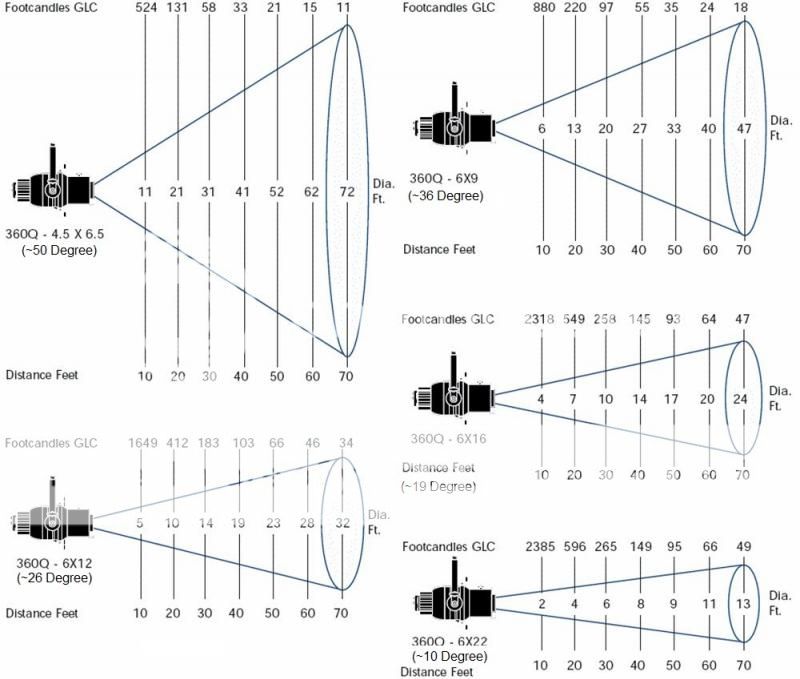In a properly working
ERS that is hard focused, all three are the same!
Your beam should not have more than a 50% variance and
spill light outside of your hard cut better be less than 10% our you should clean/
bench focus/replace your
ERS !

Beam/Field ratings are geared to soft focus/no focus fixtures such as fresnels, beam projectors, PARs,
etc. where there is a decline in output as you mover further and further from 0 degrees.
(Yes, no matter how good an
ERS is, there is always a beam
drop variance. Better fixtures have less
drop, a perfect
fixture would have a perfectly smooth area with no
drop. No such thing.)



